Half a Nirvana - Kedarnath and Badrinath
Trip Start May 11, 2019
Trip End May 18, 2019
Day 1 - 11th May, Friday
It all began with the endless wait for the bus to come. At
eleven in the night, most of us had become horizontal, while the others
struggled to keep sleep away. Maybe it was a good time for those of us awake to
reflect on the series of events that led to our waiting, amidst packed luggage,
for our Kedarnath-Badrinath trip to get underway. There were fourteen of us,
after a few unfortunate, unavoidable last-minute dropouts. It was (as half a
Char Dham [1] Yatra generally turns out to be) going to be a 6-day trip which
is usually more demanding in more ways than one - mentally, physically, and not
the least, fiscally. Which is reason enough why most first timers skip the
regular Char Dham program for just the Kedar-Badri leg. Tradition warrants that
the Char Dham be done sequentially with Yamunotri being the first stop,
followed by Gangotri, and once the pilgrim is in possession of the holy waters
of the Yamuna and Ganga, proceed to Kedarnath for offering them as abhishekam [2]
to Lord Shiva [3], and, finally to Badrinath where Lord Vishnu [4] is the
presiding deity. Even if the first two Dhams are given a miss (for logistical,
practical reasons), Kedarnath is a must-do and a pre-requisite for the
Badrinath yatra.
Day 0 - The Run-up to
the Trip
Which brings one to take an unusual step back to check out the stray events that were no less memorable than the actual journey itself. Be it the innumerable phone calls, mails and sms-es that added and subtracted to the final list; the meetings with the travel company; the arrival of the team members; the unbridled zeal each one showed in scouring footwear outlets and trying out walking shoes for the journey; the painful realization that some of the key team members were to drop out; the planning, the packing and the pre-yatra huddles. Day Zero was packed with memory that was to be the foundation for all that the next six days promised to deliver!
Day 2 - 12th May, Saturday
Finally, we were off, in a state of the art Volvo
look-alike. After the customary midway, midnight break, we woke up to find
ourselves in Haridwar [5], with the Har-ki-Pauri [6] on our left showing off
the swirling waters of the Ganges [7], with the many temples and ashrams dotted
all along its shores.
Twenty kilometers further up and we had reached Rishikesh
[8]. Into a narrow alley, the big bus turned and came to a stop outside Jeeyaar
Mutt, our first stop of the journey.
We were to transfer all our luggage (and ourselves) to
another, shorter, bus which was to be our "home" for the next six
days. But first we had to take our morning break for which we checked into the
modest rooms of the mutt while the diligent kitchen crew got down to rustle up
our first meal - a full fledged breakfast - which was to give us an insight to
their superb culinary skills, and to assure us of - at least - good dining for
the week ahead.
Refreshed, after breakfast and some loosening of our index
fingers on the shutter buttons of our cameras, we set off for some local
sightseeing (read temple & ashram visiting - remember, we were at
Rishikesh!) in a couple of rickety old autorickshaws.
Sivananda Ashram was more interesting for its vantage viewing points than its temple. Ram Jhoola [9] is a hard to miss landmark, synonymous with Rishikesh's image. A few more temples and ashrams later, we were eased into one of the local shops to be subjected to a dissertation on rudrakshas, sphadikas and the like - we gave them our ears, not so much our money. Some of us decided to check out Lakshman Jhoola [10], which is built, ironically, before the more visible bridge dedicated to the elder brother. Before long, we were back for lunch at the mutt, and loaded our luggage into our new, smaller bus. North of Rishikesh, only the shorter 27 (and below) seaters are up to negotiating the narrow, coiling roads that either climbed up or down, hardly ever flat.
Now we had left Rishikesh behind, and were headed for some
of the most mystical, divine spots in the Garhwal [11] Himalayas. What lay
ahead were several quaint towns, five important prayags, spectacular scenery
and, of course, the two destinations that had been beckoning us for months
(even years, for some of us).
As we kept climbing, we watched as the Ganges charged down
energetically and was game enough to take on batches of adventurous rafters. The
banks of the holy river took on an adventurous character with the beaches
dotted with the colourful tents of white water rafters. Just as we reached a
point where the river was now a small descent down, we got off the bus to get
our first feel of the magical river. That was just the beginning, for before
long, we had reached the first of the Prayags [12], Devprayag, where the
Bhagirathi river meets the Alaknanda before conjoining to form the holy Ganga
or Ganges.
We stopped at Bayasi for tea before proceeding to Kirti
Nagar, a small town near Srinagar. (For the geographically challenged, no, we
had not strayed into Jammu & Kashmir. This small town was once a strong
contender to be the capital of Uttarakhand till the more accessible, more
visible Dehradun pulled it off).
We retired at Hotel Kailash, an extremely modest affair, in the middle of nowhere, a good enough preparation for the austere lifestyle ahead. We were greeted by damp and musty rooms with attached bathrooms of which the less said the better. The bellboy who led us to the rooms proudly turned on the brand new cooler at our freezing selves. To warm themselves up, the members of the fairer sex, true to form, took a bath for 15 rupees (the cost of plain hot water in the hills), while the men-folk slept over ambitious plans of morning ablutions in the holy waters of Rudraprayag, the first stop for the next day.
DAY 3 - 13th May,
Sunday
Next morning, we were up early for a 5 am start, but were
hopelessly delayed by the sleepy inmates of the second bus (we shared the same
kitchen crew - so felt a bit like the helplessness Siamese twins encounter).
Once we had done our bit to bundle them in, and with the kitchen crew having
packed in their stuff too, we hit the road again. The next stop was the second
Prayag, Rudraprayag. This is where a fiery Alaknanda storms in for a rendezvous
with a demure Mandakini. We couldn't help but clamber down to watch the
confluence at closer quarters.
We stuffed our bags with a few souvenir pebbles from the
river and posed for a few snaps. As for the gentlemen, well, they took back
their towels etc. dry and unused - you see, liquid ice is not everyone's idea
of uncompromising personal hygiene.
After a sumptuous breakfast at the riverside we moved on to
our next stop, Nala, a small hamlet half-way between Rudraprayag and Gaurikund.
Just a kilometer away from Guptakashi (which is where most of Kedarnath
migrates in the harsh winter months), Nala has a small temple where Goddess
Durga is worshipped as Lalita Devi. We were to check in to Devlok, actually a
residence-turned-guest house of Shuklaji, our stern-looking but helpful host.
We piled up our luggage into his puja room that served as our cloak room.
Terribly behind schedule, we caught up with pending morning activities and
started at 12.30 for Gaurikund, the base camp. During the two hour drive, we
lunched on curd and tamarind rice that our chefs had packed for us.
Gaurikund is little more than a starting point for the 16 km
trek to Kedarnath. Other than a bustling market where you just have to stop to
do valuable pre-trek shopping, viz. sturdy sticks, raincoats and oxygen
cylinders, there is not much that warrants mention. Oh yes, two other memories
include, a) the single largest congregation of guides and touts trying to put
you atop man and animal to take you to the summit, and b) a much hyped sulphurspring that turned out to be a big let down.
It was with a mix of excitement and trepidation that we
finally began the ascent just before 2.30 pm. The locals did warn us of the
tendency of the weather to turn inclement and nasty. It was hard for us to
believe such an eventuality with the sun shining bright, at least then. Well,
the touts sure weren't kidding us, for no sooner had we covered the first
kilometer that the face of the mountains grew dark. We had already got
splintered into little groups based on our physical stamina and pace even as
the desire to be together kept regrouping us. The path to salvation was strewn
with horse dung, piss and, believe it or not, mini glaciers - the route had
just been opened for the season, so all around, the ice had hardly melted! And
while we huffed and puffed our way up, dodging the ponies, palkis (palanquins
carried by four able-bodied youths), pitthoos (baskets seating children and adults
alike, carried on the back by just one person!) and fellow trekkers, we
realized that nirvana does not come easy or clean. The wayside shops tested the
serious pilgrims' resolve of abandoning worldly joys of aerated drinks and
packets of potato wafers. Less serious ones like us unabashedly stopped at
will, refilling ours stomachs with energy food and our lungs with clean
mountain air. When these pit stops, on the pretext of waiting for the ones
lagging behind were happening too often, and with the weather also
progressively getting worse, the team think-tank declared that three of us had
to get atop ponies. Just a kilometre away from the mid-way point, the rest of
the team persevered on...
...till we reached Rambara, and till wisdom suggested that
we abandon bravado and get atop ponies to reach the summit before it grew too
dark. Not paying heed to strident protests from those who wanted to walk it, we
struck a deal at Rs.1250/- per pony, and soon enough, the convoy started
trotting together before dispersing into groups of twos and threes. Ostensibly,
Lord Shiva didn't seem to have taken kindly to our late start to the climb and,
before long, let loose his fury in the form of a cold drizzle that soon
intensified into a blizzard. Such was the chill and the fury of the weather
that we shivered violently under our inadequate, single layer of woollens. More
than the sweaters and the jackets, it was the humble Rs. 40 a piece raincoat
that seemed to have stood up to the terrible wet cold.
It must have been close to 7 pm when we staggered into
Kedarnath in splinter groups. We soon regrouped, only to find that one of us
from the earlier group had more than the average share of problems. Her pony
had buckled down about 2 km away from the summit, and what with having to find
another and lugging several pieces of baggage, the cold and the exhaustion had
got to her. Our rest stop for the night was at tent and
the staff there, fortunately for us, were more than cooperative given our
predicament. A doctor, the oxygen cylinder, the collective prayers of the rest
of the group, and last but not the least, her positive attitude seemed to have
made her condition better.
We checked into our rooms, and gorged on a thali-style
dinner prior to diving into the comfort of warm rajais [13] - but not before
resolving to wake up at 4 in the morning to catch the brilliance of the
Kedarnath sunrise.
DAY 4 - 14th May, Monday
It could only have been our enthusiasm that pulled most of
us out of bed and onto the rooftop of the Maharashtra Mandal to see day break
over the Sumeru peak. And the hot, piping cuppa that was sent up to the terrace
by the dhaba below only made life better! Trigger happy, we clicked away at
everything that lay between North, East, West and South, and the law of
averages ensured we did get a few decent snaps each.
Soon we realized we were getting late for the real show!
Breakfast could wait - now it was time to join the serpentine queues for the
darshan [14] of Shri Bholenathji [15]. Abandoning our footwear (but not our
tenacity), we stood in mere socks and sheer devotion and wished that the queue
would move, and that the sun god would climb over Sumeru to bless us with its
warm rays. Never in living memory had the May sun been looked forward to with
such fervour. With blood now beginning to flow freely through frozen veins,
some of us even toyed with the idea of doing the 6 km trek to Vasuki Tal, which
at 4135mts, is an extraordinary lake surrounded by mountains and offering an
excellent view of the Chaukhamba peaks. Or, maybe, just that 1.5km climb to
Gandhi Sarovar, a smaller waterbody where Yudhishtir [16] was supposed to have
departed to heaven. But, for the while, it had to be just Jai Bholenath and his
abode in the surreal Mandakini Valley.
Quaint and ancient, the Kedarnath temple was, purportedly,
built by the Pandavas [17] to atone for the sins committed by them during the
great war. (This was later rebuilt by Adi Shankaracharya [18] in the 9th
century). At 3583 m, this is the highest of all the Char Dhams. Today, as is
the case with the other three, the temple is open only during the habitable
months (usually May till September). The priests, along with the deity move
down to Ukhimath We got the sense of being dwarfed in the valley with the majestic,
snow-clad mountains all around us. Adding to the ambience of the temple were
pot smoking sanyasis [19] showing off their rich dreadlocks, their messy
tresses tangled about like the roots of a snarled tree. Their bodies smeared
with bhasma [20] and accessorized with n-faced rudrakshas, all of them seemed
to be straight out of a Shiva look-alike contest. We were especially impressed
by a rather stocky sanyasi, who sat by the entrance, avoiding the sun, dressed
only waist down. We were told that he was a regular fixture there, come rain or
shine, content in his single dhoti [21]. Unlike the others, he didn't seem to
solicit alms - so it seemed a divine mystery as to how he could accumulate that
wad of notes piled under the rug he sat on.
Finally, we were at the entrance to the temple and all set
for our darshan. But what really kind of blew away the serenity and the piety
was the infiltration of a few devotees into the queue...and all under the aegis
of some unscrupulous junior priests. Despite the place and the occasion, we
couldn't help getting a little agitated at them. Soon, we were inside the
sanctum sanctorum which was a beehive of activity - and before long, we were
outside. We let modern day technological marvels document our presence in front
of the even more awesome ancient marvels. We were also curious about
Shankaracharya's Samadhi [22] which was, supposedly, somewhere near by. A
single storied concrete structure, a hundred metres away from the main temple,
it turned out to be a most unimpressive affair - a flock of unruly sanyasis
squatting outside, smoking and demanding alms made us feel sorry for the great
sage trying to get a well-deserved final rest!
We broke our fast on parathas [23] and upma [24] before
checking out and readying ourselves for the long trek down. The more pragmatic
amongst us did not put up much of a fight and agreed to ride it down - the
others began to walk. The lessons learnt in our disorganized trek up were put
to good use by deciding to space out the walk and the meeting points (2 km
apart on average). Some of the more athletic sprinted down, while the
adventurous tried a few shortcuts across the mountainside. It was then that
most of us felt an ache in our toes that kept brushing against the front of our
shoes. But the spirits were high and we all agreed it was better to have
bruised toes than bruised egos! Of course, the intermittent hauls that the
Pawan Hans [25] helicopters service (for Rs.7500/- pp both ways, you could reach from
Phata to the summit in less than 10 minutes - and spend lesser time in the
queues for a preferential darshan!) did from time to time only hardened our
resolves with well-aimed cynicism. And before long we were at the base camp
ready for a celebratory snap, complete with our thumbs up and the victory signs
out.
By 4 pm, we were ready to board the bus back to Nala and
were served a quick lunch in the bus. Tired but contented, we longed for a hot
bath and a good rest before we proceeded for our next stop, Badrinath. And our
driver only made it more exciting by urging us to drop the Rudraprayag route
and trying out the picturesque (though just 11 km shorter) Ukhimath-Chopta
route.
Day 5 - 15th May, Tuesday
We were up early and were rewarded with a lovely sunrise and
the promise of a scenic, albeit long, ride ahead. The Chopta route is the one
less taken for logistical reasons - there weren't too many filling stations or
workshops on the way. Which explained the drop in traffic too. From Okhimath to
Chopta, the mountain road kept climbing and the scenery kept getting lovelier.
One wondered why we rave about the Swiss Alps when we had better (and unspoilt)
examples of Mother Nature at her best right here in the Himalayas. We stopped
over at Chopta for breakfast and some snaps before driving down to Chamoli, the
meeting point of both the routes. The beautiful waterfalls, the gurgling
rivulets, and some cavernous caves at Joshimath made us stop there for lunch.
Most of us turned towards nature when it called. The caves turned into women's
rest room; as for the menfolk, they were all about the place. After lunch -
which was getting better by the meal - we hurried on to get past the 2 pm gate.
(The famed gate system that regulates traffic on the one-way
Joshimath-Badrinath route is what retains some sanity in those difficult
driving conditions. The gate is opened at 12, 2 and 4 pm daily). As we waited
near the gate, a half-drunk, loud-mouth cop hopped on for a free ride in our
bus, shooing away poor kids trying to eke a living out of selling cheap guide
books, blankets and saffron of indeterminate quality. We were lucky that the
gates opened on time and the climb began. En-route we passed the roads leading
to Auli (India's premier ski-resort.) and Govindghat (the starting point for
Hemkund Sahib and Valley of Flowers treks - but then that is quite another
story, saved for another day!).
Unlike the road to Kedar, the climb here was pretty steep,
the vehicles nearly always climbing at a 45 degree angle. None dared to sleep a
wink, almost as if the bus were being driven by the collective concentration of
everyone, and not just the driver's. After all with every 1 km we were gaining
a height of nearly 27m - it was a 45 km drive where we were to gain 1200 m.
What made us sit up at the edge of our seats was not the unfathomable depths of
the ravines, or the seemingly insurmountable heights of the mountains all
around us, but the evidence of fresh violence caused by landslides. We tried
not to gasp at the size of the big boulders precariously perched right above
like Damocles' sword, lest it should trigger a fresh round. For the
faint-hearted (and who isn't at those heights!), there weren't many
alternatives to look at. It was either the looming mountains above or the
endless depths below - all you could do was avoid sitting by the window! Of
course, you could pray - and remember, more than M/s Shiva or Vishnu, in those
high places, your God is usually someone dressed in khaki and holding a
steering wheel in his hands and with a few pedals to keep his feet busy. And
you also pray that Gods never doze off or prefer to drive rashly...
Our bus drew into Badrinath at 5.30 pm and deposited us
weary travelers into Satsang Sevashram. We checked in and freshened up at
record speed and set off for the Badrivishal temple and to see if we could meet
up with Rawalji (the title conferred on the chief priest here, who is -
traditionally - a single Namboothiri [26]). While our eyes beheld the Nara peak
and the majestic, snowcapped Neelkanth towered (at 6558 metres) in the west, we
hung about clueless on the Narayan Mountain. Presently, we were sniffed out by
a helpful (read enterprising) priest who was introduced to us by his glossy
visiting card. He promised us his services, ranging from a Darshan replete with
the most intricate of rituals, to a personal audience with Rawalji. The latter
was not in his chambers, so we made do with a quick Pranam [27] to the Lord.
After that cursory Darshan, we visited Tapt Kund, a bubbling hot water spring,
around which the temple (which resembles a Tibetan Gompa, from a distance) was
purportedly designed. It was hard to tell the steam from the fog, and we
watched as pilgrims poured themselves with boiling water from the tank. A
sudden hailstorm forced us to take cover in a restaurant and treat ourselves to
a hot cup of tea. We caught up with a British couple who had been staying in
Badrinath for the last 5 days! And there were some among us who repeatedly
wanted to know what time we would begin to make the descent! Talking of
descents, after October and the harsh winter sets in, the deity is carried down
to Pandukeshwar where worship is continued till May.
DAY 6 - 16th May,
Wednesday
Next morning, we were all up and about by 5 am (which had
become the norm by now) for our meeting with Rawalji. We reached the temple by
6.30 and were ushered into his personal chambers. After a wait of 15 minutes,
Shri Badri Prasad Namboodiri, hailing from Payyanur, strode in. Somewhere in
his thirties, he came across as an amiable and, surprisingly, approachable
person. He made it a point to exchange pleasantries with each and every one in
the room, including a family from Himachal [28]. The long queue deterred us
from a re-visit to the temple, instead we visited Brahma Kapal, a spot where
pilgrims perform Pinda Dana [29] for their ancestors. We caught a priest
relieving himself at the banks of the Alaknanda creating a hitherto unnamed
Prayag! Of course, no visit is complete without the customary souvenir shopping
- and we hit the streets.
We hurried through breakfast for our next big stop, Mana
village. We were eager to see the place for more reasons than one. This was (in
that direction) the last Indian village; the caves where Vyasa [30] and Ganesha
[31] dictated and wrote (respectively) both the Mahabharata [32] and the Bhagwad
Gita [33]; and, of course, the source of the elusive Saraswati river. Reason
enough for any die-hard tourist to head for such a place! A mere 3 km by road
and you are there - well, in our case, with a bunch of Russian tourists, some
of them who even read signboards in Hindi! We first saw the Ganesh Gufa [34],
which was more of a dent in the mountain than a cave, with a temple as the
façade. Further up, we passed the last post-office and several tiled cottages
with some innocent faces peering out at us. We could almost hear the roar of
the Saraswati now. The sight itself of the river was one to behold as it seemed
to erupt out of nowhere and dashed out through the rocky mountain face. Just
over it was Bhim Pul [35] which is a massive rock that Bhim was supposed to
have placed over this waterfall. We saw, in the distance, the Saraswati and the
Alaknanda (which was flowing all the way from Alakapuri) meeting at
Keshavprayag. On the other side, the Satopanth mountain (apparently, it takes 7
days to reach there - we were also told no one who visits it comes back...so
wonder how they figured out the duration of that trek?!) beyond which the
Chinese border began.
Vyas Gufa was another very steep half a kilometer up. We struggled to reach there - but it was well worth it. Just beyond the last tea-stall (so declared pompously in most of the Indian languages), was the Gufa where Vyasa sat and wrote these "bestsellers". Small wonder, as it was so silent inside the cave that the seer could have even heard his feather- tipped pen drop. After a tea each at the special restaurant, we headed back to our hotel, happy at not having missed out on the Mana experience!
An appetizing lunch later, we checked out in time for the 2
pm gate and glided down the hills to Joshimath and all the way to Pipalkoti for
the night stay.
DAY 7 - 17th May, Thursday
The next morning, we were up early for the last day of the
trip. This was to be just the bus and little else - about 240 km, from
Pipalkoti all the way down to Haridwar. Most of us were dog-tired and had more
than our fill of mountains, rivulets and Prayags - so chose to just take it
easy. Lunch was at a tall Shiva statue near Devprayag, and till Rishikesh most
of us just snoozed. We took the bypass through the Rajaji National Park and reached
Har-ki-Pauri and checked into an ashram nearby.
It was time for the famed Aarti [36], slated to begin at
sundown. We stuffed ourselves into those oversized autorickshaws and were soon
at the crowded shores of Har-ki-pauri, teeming with tourists, sadhus and the
like. For us, who had seen Ganga in its various avatars and all of them pure
and pristine, this was more like a man-made, murky canal. The Ganga that we saw
for the last one week, the Ganga that played a constant consort all through our
journey had now been reduced to a large drain. The hundreds who rape the river
every day by immersing themselves, their impurities (literally) and their aarti
thalis just made us marvel at the pregnant meaning of the famous song "Ram
teri Ganga maili ho gayi; paapiyon ke paap dhote dhote [37]."
The drive back was a long sleep, disturbed only by the
mid-way stop at Khatauli. Well, none of us really had to sleep to dream of the
mountains and the winding roads. Just closing your eyes even when you are wide
awake makes you see nothing else - especially, if the Himalayas have been your
home for the last one week. But, no one was complaining. It had been a great
experience, frustrating at times, mostly tiring; but always worth every moment,
and never without gratification. Or should that be nirvana? Okay, we didn't do
Yamunotri and Gangotri...so let's make that (at least) half a nirvana?!
Meanwhile, we are planning on how to get the other half. And we would love to
take the count beyond 14 !!! So, start now and sin all you can...
Postscript: A few key learnings from the trip :
- Mini buses (Volvo) are the only way to travel to the Char Dhams. Beyond Rishikesh, full size buses do not ply. Travelling by your own vehicle is possible - but both the vehicle and the driver better be good and up to the task! Not to mention the wear and tear on both once the trip is through!
- The dhams are closed from mid-October to mid-May due to the cold winter. Also, avoid the monsoons that can make travel in the hills fraught with danger due to landslides.
- Several tour operators (Panickers Travels, South Indian Travels, Rao Travels, Namaste India Trip, Shikhar Travels to name a few) have conducted tours on a per-seat basis. We travelled by Shikhar Travels and found the service levels extremely great.
- If hiring a mini-bus, ensure that the tour operator is not stringing your bus with any other - kitchen staff would get clubbed leading to delays on account of lack of coordination and curb in freedom. This is what we had to suffer and the overall experience (except for the excellent food that the kitchen crew made and served) with this company was the only dampener in an otherwise memorable journey. The guide allocated to us was probably the worst there could ever be. Incidentally, repeated emails sent to the proprietor of Dev Travels, regarding our complaints and feedback failed to evoke a single response! So, our recommendation as far as this company is concerned - AVOID!
- Start the climb to Kedarnath in the morning itself - at those heights, the weather almost always turns cloudy (and begins to pour) in the afternoons, however sunny it might be in the mornings. Hence, the previous night's stay should be ideally at Gaurikund, Nala or at the furthest, Guptakashi
- Two layers of woolens are a must if going in May - a windcheater will be a great help to combat cold winds and the afternoon-evening rains
- The humble walking sticks should not be made the object of disdain - you would realize their worth after the first 2-3 km.
- You don't need to carry any eatables, water bottles etc. with you. There are plenty of shops along the way. Leave space in your rucksacks for woolens (caps, gloves, socks etc.), however funny they look from Delhi all the way to Gaurikund, Joshimath etc., always have the last laugh at heights over 3000 m. Respect them for what they are worth.
- Try and take the Okhimath-Chopta route when proceeding from Kedarnath to Badrinath. This is much more picturesque (with lofty mountains and thick jungles) than the main Rudraprayag-Chamoli route (which anyway you have to take on the way down from Badrinath)
- Leaving Badrinath by the 2 pm gate is recommended - you can fit in the Mana visit after a morning darshan-cum-Rawalji audience. The 12 pm gate won't allow you all this; and depending on the last (4 pm) gate can be risky.
- Ask your driver to take the bypass road from Rishikesh to Haridwar. This will help you beat the main road traffic and also give you a glimpse of Rajaji National Park.
Glossary (refer the serial numbers in the text above) :
[1] Char Dham literally means Four Abodes. These are Yamunotri, Gangotri, Kedarnath and Badrinath, all being shrines up in the high Himalayas. Pilgrims consider visiting these four temples quite auspicious and this yatra or journey is no less than attaining Nirvana.
[2] Offering to the Gods.
[3] Lord Shiva is one of the three principle deities of Hinduism.
[4] Lord Vishnu, alongwith Shiva and Brahma, form the Holy Trinity among Hindu Gods.
[5] Temple town and religious hub. This Uttarakhand town is the base for most pilgrimages in the Garhwal mountains.
[6] The ghats at Haridwar where every evening pilgrims gather to make offerings to Ganga, the holy river flowing down from the lofty Himalayan peaks.
[7] The holy river, Ganga or Ganges flows down from the Himalayan glaciers, and is held in reverence by all Indians.
[8] This small town by the banks of the Ganga is where the journey begins to the Garhwal range of the Himalayas, esp. for the Char Dham yatra.
[9] Ram or Rama is one of the ten incarnations of Lord Vishnu, and was known to be a great king who ruled Ayodhya. He killed the demon king Ravana. Jhoola means a swing. The Ram Jhoola at Rishikesh is a hanging bridge that spans across the river Ganga.
[10] Lakshman is the younger brother of Rama. A little distance away from the Ram Jhoola is another hanging bridge named after this devoted sibling of the Lord.
[11] A region in the Himalayas famed for its lofty mountain peaks and natural beauty.
[12] Confluence, especially of two or more rivers. These prayags often have small temple towns that have sprung up around them, frequented by pilgrims enroute to shrines higher up in the mountains.
[13] Quilts
[14] Literally means the sight, used in context of the pilgrim or worshipper seeing the deity or divine form.
[15] Another name for Lord Shiva.
[16] Eldest among the Pandava brothers who fought the evil Kauravas and triumphed.
[17] The sons of King Pandu.
[18] A prominent sage who traveled across India and established the four prominent mutts or centres of spiritual learning.
[19] Sages
[20] Ash
[21] A large piece of cloth draped around the lower half of the body.
[22] State of having relinquished the physical form, especially used in context of sages upon their death.
[23] Pancake (mostly made out of wheat) with stuffed vegetables, cottage cheese etc.
[24] South Indian breakfast/snack delicacy.
[25] An aviation company specializing in helicopter charter flights.
[26] Member of a Brahmin caste belonging to Kerala, in South India.
[27] Greeting
[28] Short for Himachal Pradesh, a state in North India known for its natural beauty and hill stations.
[29] Ritual performed by a bereaved (usually the spouse and children of the deceased) making an offering to the dead ancestor/s.
[30] Famous Indian sage who scripted the epic, Mahabharata.
[31] The son of Lord Shiva and Goddess Parvati, Ganesha or Ganpati, who has the body of human and the head of an elephant, is worshipped as the God who helps overcome obstacles.
[32] The epic tale of the Pandavas and the Kauravas, and the battle fought at Kurukshetra.
[33] The discourse given by Lord Krishna to Arjuna (third of the Pandava brothers) during the Kurukshetra battle. This is also one of the holy books of the Hindus.
[34] Cave. This is the cave where Ganesha was said to have been residing.
[35] Bhim was the second of the Pandava brothers and was famous for his might. Pul means bridge.
[36] A Hindu ritual of singing religious songs to appease the Gods. At Haridwar, this is done at sundown, with diyas or small earthen cups, filled with oil and a lighted wick, set afloat in the Ganga.
[37] A Hindi film song. Translated, it means - Lord Ram, thy river Ganga has become impure by the constant washing of the sins of the sinners.
Guest Post by: P.rajesh
 Reviewed by travellers
on
02:21
Rating:
Reviewed by travellers
on
02:21
Rating:
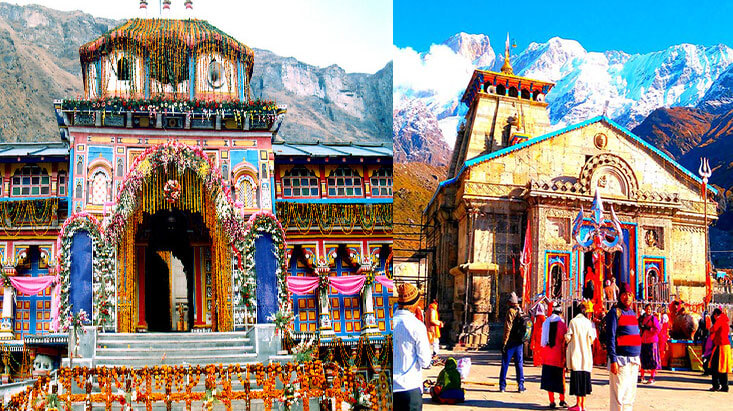
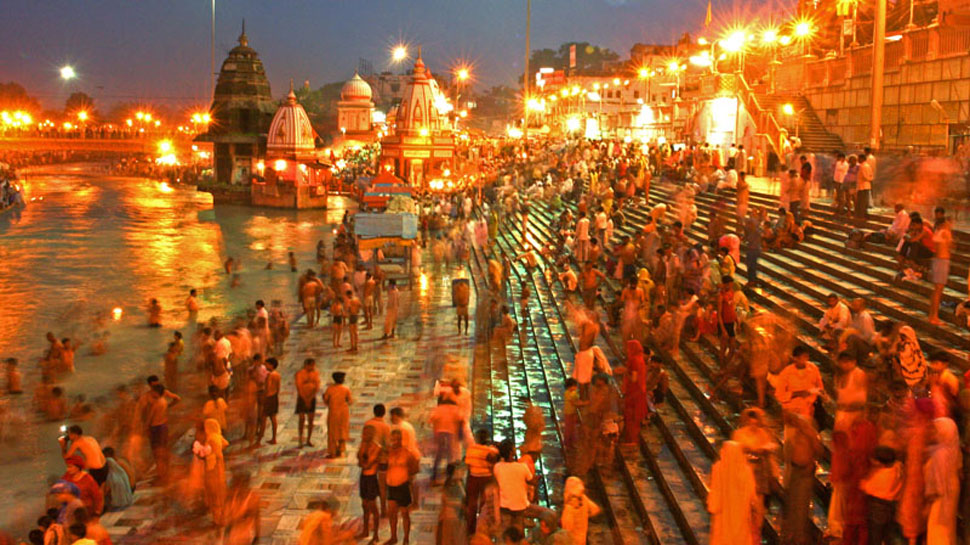
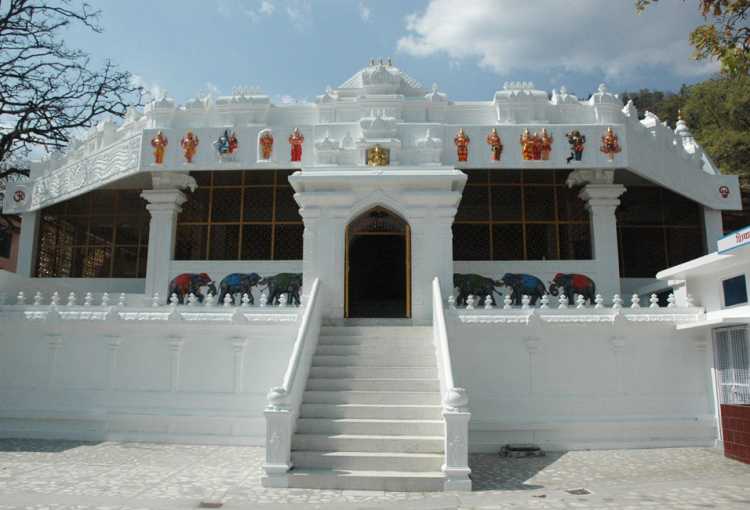
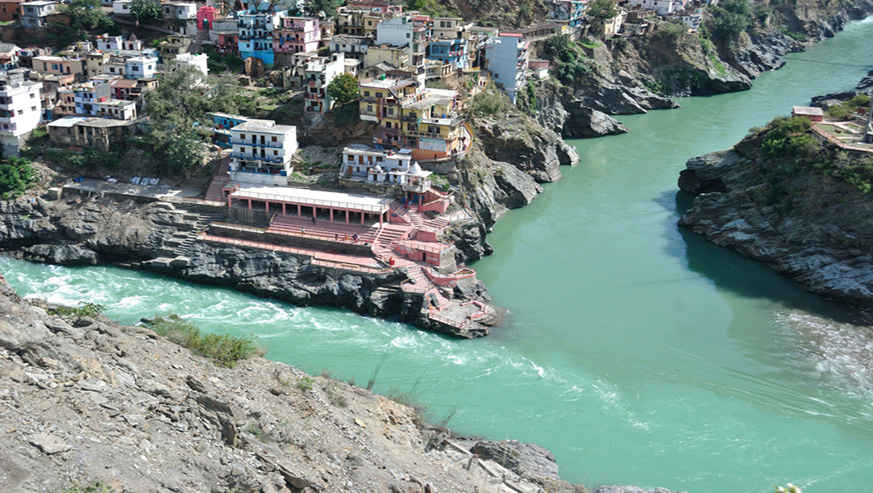
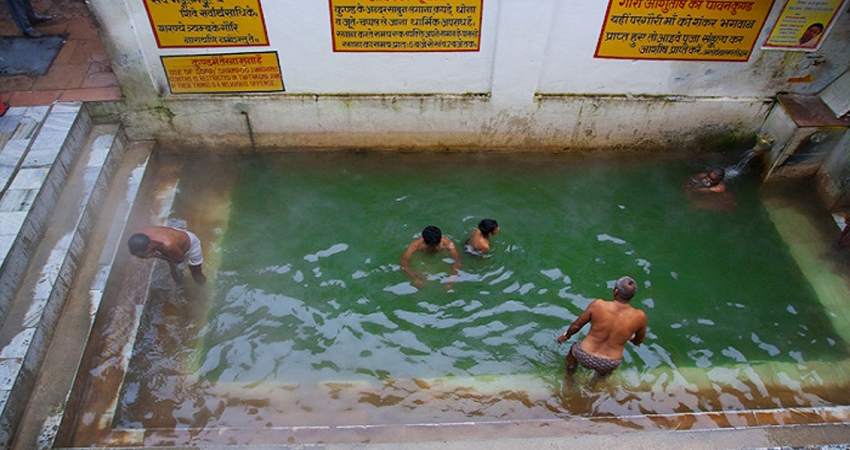


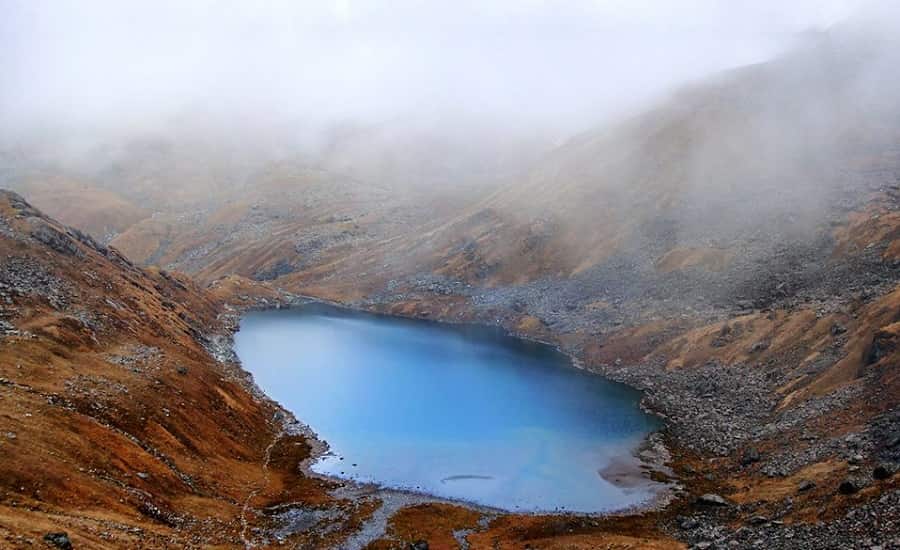



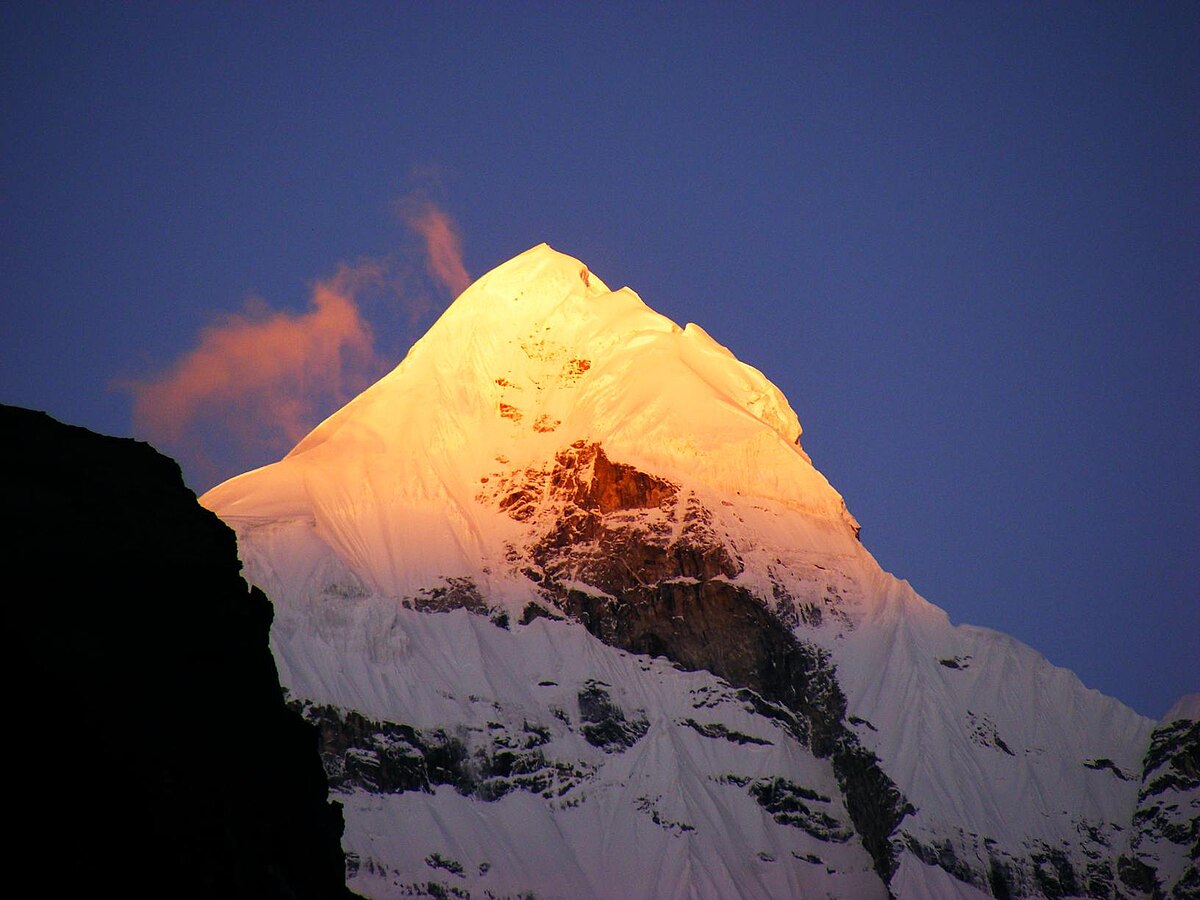





No comments: